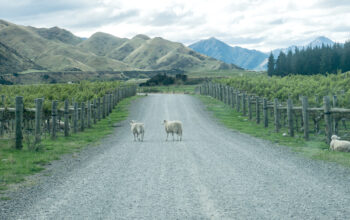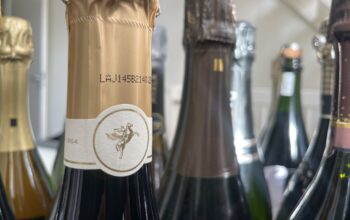It may sound contradictory: 'burgundy' and 'Bordeaux' in one title. But just as burgundy does not necessarily mean it comes from Burgundy, a Bordeaux blend does not have to come from Bordeaux either. In fact, a lot of these blends are precisely not from Bordeaux. And those are some Burgundian wines, dinner-worthy!
Text: Evelijn van Heuven
Whether you are a wine lover or not, everyone knows Bordeaux or has at least heard of it at some point. It is the classic among wine regions, since time immemorial. Or rather, since the Romans settled in the region. But did you know that this region is also known for its own 'blend', or combination of grapes? Indeed, it is actually not just one blend, as there are several possible combinations.
MORE THAN ONE BLEND
This needs a bit more explanation. By Bordeaux blend, we mean all wines made from two or more of the classic Bordeaux grapes: cabernet sauvignon, merlot, cabernet franc, petit verdot, carmenère and malbec. It is a popular term because it refers to that oh-so-famous, classic French wine region. It instantly gives a wine some cachet. But beware, there are no established rules or laws for Bordeaux blends. For example, on the proportion of grapes in the final wine, or on the yield of grapes in the vineyard. So it says nothing about the quality of a wine. It purely indicates that a blend of certain grapes has been used. If you ask a fan of Bordeaux wines from the left bank (Médoc), they will lean more towards a blend where cabernet predominates. Conversely, someone who is very fond of those from the right bank (Saint-Émilion and Pomerol) will prefer a leading role for merlot. And so all sorts of combinations and preferences within the blend are possible.
INTELLIGENT ROLE DISTRIBUTION
In such a Bordeaux blend, the grapes are obviously not just randomly added together. Each grape has its own interesting characteristics. Cabernet Sauvignon, for instance, gives the wine structure and storage potential. It adds aromas of blackcurrant, cassis and sometimes green pepper. Cabernet is often called 'the backbone'. Merlot, on the other hand, makes the wine softer and plumper, giving a velvety mouthfeel. Fruits like plums, cherries and raspberries make an appearance. Then the somewhat lesser-known cabernet franc and petit verdot. The former adds complexity and spiciness and sometimes a hint of pencil shavings, while the latter mainly adds depth and colour to the wine.
Further reading? You will find more information in WINELIFE Magazine, issue 86. You can order this one here.
Don't want to miss a single edition? Subscribe then subscribe to WINELIFE Magazine now!
Want to stay up to date with the best articles? Follow WINELIFE magazine on Instagram, Facebook and sign up for our fortnightly newsletter.




